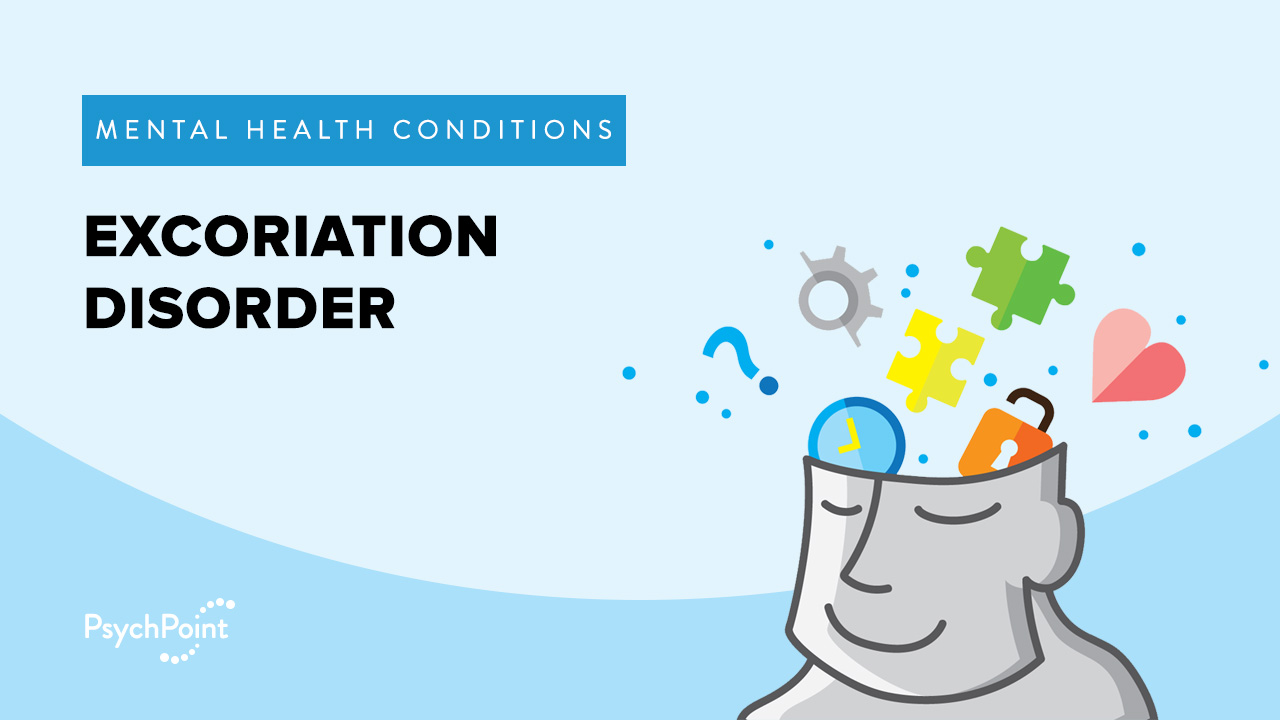Picking At Your Skin: Excoriation Disorder
Published on August 26th, 2019
Updated on January 6th, 2024

A person with excoriation disorder suffers from the compulsive need to pick at their skin. It is a disorder that creates a compulsion to pick at various areas of the body to relieve stress.
A person with excoriation disorder will pick at their skin when they are feeling upset, anxious, or overwhelmed. The chronic picking will leave sores, lesions, and scars on the targeted areas of the body.
Excoriation disorder has the potential for serious consequences. The most common side effect of the disorder is scarring. The constant need to pick at skin leaves deep scars throughout the body. It often causes irreparable damage. The skin picking compulsion can also lead to infection, as there are constant open wounds on various parts of the body.
Sponsored by

Choose a therapist to work with and start healing with 20% off from BetterHelp.
Click HereSigns and Symptoms of Excoriation Disorder
Excoriation disorder harms an affected person. They often feel embarrassed and ashamed about their habit.
People with excoriation disorder will try to hide their habits. They will do so by being subtle with their picking. They may also hide their sores and scabs.
Knowing the signs and symptoms of excoriation disorder can be a helpful first step in learning how to take control of the condition. It is important to note that to be diagnosed with excoriation disorder, the skin picking must not be due to another issue. This means that the picking is not the result of another factor, like:
- Allergies
- Cutting to cope with emotional pain
- Other medical and mental health conditions
- Side effects of medication
- Substance use
The following are signs and symptoms of excoriation disorder:
- Compulsively picking at one’s own skin, scabs, or cuticles
- Picking at skin in response to stress or anxiety
- Having noticeable open scars, wounds, and sores on body
- Having the skin picking significantly affect one’s ability to function socially, academically, or at work
- Social withdrawal or isolation from family and friends
- Embarrassment and shame for habit and resulting sores and scars
- Attempts to hide or conceal the act and habit of skin picking
- Attempts to hide or conceal sores and scabs on body
- Having the skin picking significantly affect relationships
- Failed attempts to stop the skin picking habit
- Visible sores, scars, scabs and wounds on face, arms, legs, hands, neck and chest
Causes of Excoriation Disorder
Excoriation disorder develops as a result of biological and environmental influences. This means developing the disorder may be related to a person’s genetic history and the way they grew up.
These causal factors often induce a level of stress that is uncomfortable for the affected person. The habit of skin picking is used to relieve stress.
The following are risk factors that may contribute to the development of excoriation disorder:
- Poor coping skills for stress and anxiety
- Insecurities about personal appearance
- A family history of obsessive-compulsive disorder or related disorders
- A previous habit of playing with hair or biting nails
A person with excoriation disorder may also suffer from a co-occurring disorder. This is a mental health disorder that occurs simultaneously with excoriation disorder.
Common co-occurring disorders with excoriation disorder include:
- Obsessive-compulsive disorder
- Body dysmorphic disorder
- Depression
- Trichotillomania
- Anxiety

Treatment for Excoriation Disorder
Excoriation disorder is difficult to recover from without treatment. People with the disorder pick at their skin so frequently they may not even realize they are doing it at times. This makes quitting the habit very difficult.
Many people repeatedly attempt to stop picking at their skin. Challenges with quitting the habit are related to not using an effective method to quit.
There are forms of effective treatment for excoriation disorder. They require therapy with a mental health professional. With a commitment to therapy, it is possible to get better.
Common forms of therapy for excoriation disorder include:
Awareness Training
Awareness training teaches an affected person how to pay attention to their body. With awareness training, the affected person becomes aware of their behaviors in the moment that they are happening. This helps them to understand what their body does in response to stress. Being aware of the patterns of behavior is an important part of stopping unwanted behaviors like skin picking.
Cognitive behavioral therapy (CBT)
CBT helps the affected person gain insight into why they resort to skin picking. It also helps to learn stress management skills and methods to change thinking patterns to reduce anxiety.
If a person with excoriation disorder can learn how to manage their anxiety and emotions in a healthy way, they will be better equipped to stop their skin-picking habit.
Habit Reversal training
Habit reversal training is a method used to find healthier ways to relieve stress.
Example: A therapist may recommend a fidget toy or stress ball to use instead of skin picking when stressed.
Habit reversal training also helps to identify triggers and stressors that cause the skin picking habit.
Medication
Mental health professionals may also recommend medication options. With therapy, medication can help reduce the skin picking behavior. It is important to note that medication alone may not be enough to recover from excoriation disorder. An affected person should also be active in their therapy.
Sponsored by

Find an affordable therapist online with 20% off from BetterHelp.
Click Here






Leave A Reply